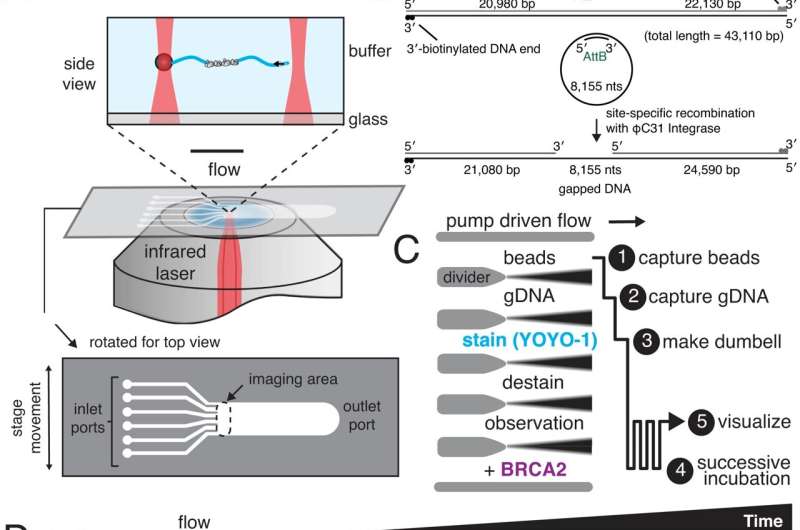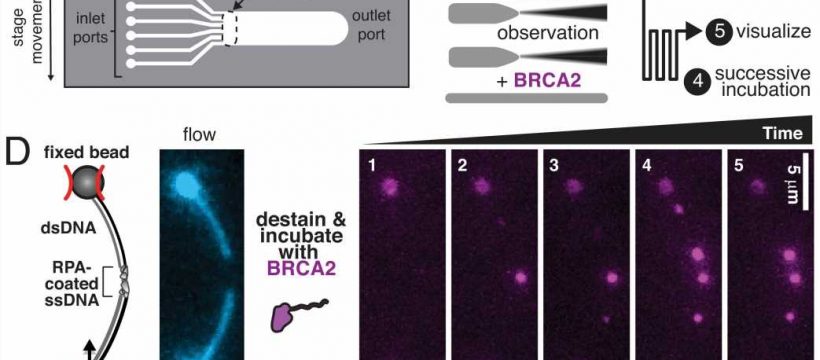
Using a self-built inverted microscope complete with laser optical tweezers to capture DNA, Yale Cancer Center and University of California Davis researchers for the first time created a visualization of the full-length human BRCA2 protein at the single molecule level.
Mutations in the breast cancer susceptibility gene, BRCA2, can significantly increase an individual’s lifetime risk of developing cancer. Approximately one in every 400 people carry a BRCA gene mutation accounting for a significant proportion of cancer that is heritable. The study was published on March 28 in the Proceedings of the National Academy of Sciences.
“If you carry a BRCA mutation, you have this incredibly high risk for breast and ovarian cancer, and also for men, prostate and pancreatic cancer,” said Yale Cancer Center member and co-author of the paper, Ryan Jensen, Ph.D., who is also an associate professor of therapeutic Radiology at Yale School of Medicine.
“It’s critical that we understand at a molecular level when a mutation in BRCA2 is discovered in a patient. If the BRCA2 protein fails to do its job, why does that failure lead to cancer? My lab is completely invested in understanding the BRCA2 protein in all its facets.”
The BRCA2 gene provides instructions for making a protein that acts as a tumor suppressor. Tumor suppressor proteins help prevent cells from growing and dividing too rapidly or in an uncontrolled way. Dr. Jensen said, “This experiment was designed to better understand how the BRCA2 protein binds and interacts with DNA, one molecule at a time. This ‘visual biochemistry’ approach is akin to sitting back in a theater and watching a movie of how proteins bind and interact with DNA in real time.”
“BRCA2 is a DNA repair protein, so it repairs damage to our DNA. Specifically, double-strand breaks in the DNA, can be repaired by a few different pathways in human cells. BRCA2 in particular works in the homologous recombination pathway,” said Dr. Jensen.
“By figuring out how BRCA2 works at the molecular level, that’s going to give us more information to generate new strategies that could one day help BRCA mutation carriers who either don’t respond or who relapse on current standard-of-care therapies. The more knowledge we have, the better,” said Dr. Jensen.
More information:
Jason C. Bell et al, BRCA2 chaperones RAD51 to single molecules of RPA-coated ssDNA, Proceedings of the National Academy of Sciences (2023). DOI: 10.1073/pnas.2221971120
Journal information:
Proceedings of the National Academy of Sciences
Source: Read Full Article
